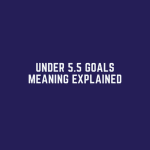Understanding the Basics of Betting Lines
Betting lines are a fundamental aspect of sports betting that dictate the process of wagering on different outcomes of a sporting event. They serve as a point of reference for both bettors and bookmakers to determine the likelihood of a specific outcome. These lines are typically presented in either American odds, decimal odds, or fractional odds formats.
American odds are represented with either a plus (+) or minus (-) sign in front of the number, indicative of the underdog and favorite, respectively. Decimal odds display the potential payout of a successful bet per unit staked, while fractional odds showcase the ratio of potential profit relative to the stake. Understanding how to read and interpret these different types of odds is essential in making informed betting decisions and maximizing potential returns.
Different Types of Betting Lines
When it comes to sports betting, there are various types of betting lines available for punters to choose from. The most common types include point spreads, moneylines, and totals. Point spreads involve handicapping the favorite team by a certain number of points, while moneylines simply require choosing the team that will win the game. Totals, also known as over/unders, involve betting on whether the total combined score of both teams will be over or under a set number.
In addition to these primary types of betting lines, there are also alternative lines that offer different odds and payouts. These alternative lines can include things like alternate point spreads, reverse bets, and proposition bets. Alternate point spreads allow bettors to wager on a different point spread than the standard line, while reverse bets involve combining two separate bets into one. Proposition bets, or prop bets, are wagers placed on specific events within a game, such as which player will score the first goal or how many strikeouts a pitcher will throw.
Reading and Interpreting Odds
When looking at betting odds, it’s important to understand what they represent. Odds typically come in three formats: decimal, fractional, and moneyline. Decimal odds show the total payout if the bet is successful, while fractional odds indicate the profit made from a successful bet. Moneyline odds show the amount that needs to be wagered or the potential payout if betting on the favored or underdog team.
Interpreting odds involves recognizing the implied probability of an outcome. The lower the odds, the higher the probability of that outcome occurring. Conversely, higher odds indicate a lower probability of success. Understanding odds allows bettors to assess the risk versus reward of a potential wager and make informed decisions when placing bets.
Factors that Influence Betting Lines
One of the key factors that can influence betting lines is the injury status of key players. The absence or presence of star players can significantly impact the overall odds for a particular game or match. Bookmakers take into account the skill level and importance of individual players when setting betting lines, so any changes in the lineup due to injuries can lead to adjustments in the odds.
Another important factor that can influence betting lines is the betting behavior of the public. The amount of money wagered on a certain outcome can sway the odds one way or another. Bookmakers may adjust the lines based on where the majority of the bets are being placed in order to balance their risk and ensure they are not overly exposed on one particular outcome. This phenomenon, known as line movement, can be a result of public perception, trends, or other external factors influencing the betting market.
Calculating Potential Payouts
When it comes to calculating potential payouts in sports betting, understanding the odds is essential. The odds assigned to each possible outcome determine how much you stand to win if your bet is successful. To calculate your potential payout, simply multiply your wager by the odds. For example, if you bet $100 on a team with odds of +150, your potential payout would be $250 ($100 x 1.5).
Additionally, it’s important to consider whether the odds are represented in American, Decimal, or Fractional format when calculating potential payouts. Each format requires a slightly different approach to determine your potential winnings. By familiarizing yourself with the specific format and odds associated with a bet, you can accurately calculate your potential payout and make informed decisions when placing bets.















